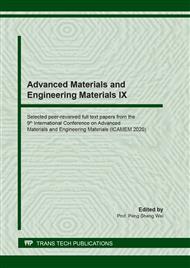p.414
p.421
p.429
p.438
p.446
p.452
p.458
p.465
p.473
Effect of Raw Materials Formula on Performance of Steel Slag Cement
Abstract:
At present, the commonly used cement has low tensile strength and low flexural strength, which is a fatal defect of cement materials. It is extremely urgent to conduct research on this shortcoming of cement. In addition, the steel industry steel mill produces a large amount of waste steel slag. The chemical composition of steel slag is similar to that of cement. This experiment makes full use of waste steel slag as raw material to prepare cement to improve the performance of cement materials. Using limestone, sandstone, shale, steel slag and river sand as the main raw materials, through the powder preparation, mixing, calcination, grinding, molding process and performance analysis of raw materials. After the calcination, the cement clinker in the form of a block becomes higher in hardness as the steel slag is incorporated. The higher the calcination temperature, the smaller the steel slag incorporation maximum. When the calcined at 1150 °C is mixed with 17.5% steel slag, a cement with better performance can be obtained.
Info:
Periodical:
Pages:
446-451
Citation:
Online since:
September 2020
Authors:
Keywords:
Price:
Сopyright:
© 2020 Trans Tech Publications Ltd. All Rights Reserved
Share:
Citation:


